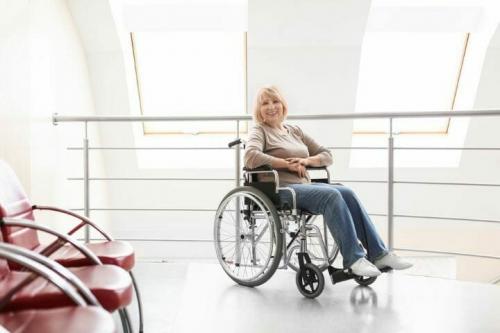How do Bed and Chair Alarms Help?

Bed and chair alarms are devices that contain sensors that trigger an alarm or warning red light once they detect a change in pressure. The sensor pads are generally placed either under the shoulder area, or under the hip area, underneath the sheets on the mattress.
The purpose of those alarms is to alert staff to respond quickly and intervene to assist and help the patient, thus preventing a fall.
There are multiple sorts of bed alarms, including -
- Motion sensors with in-room exit alarms
- Bed sensor pads with wireless monitors
- Chair sensor pads and exit alarms
- Floor pressure sensor mats
- Room motion monitors
- Pull string alarms
How effective are they in hospital setup?
It’s important to recollect that these systems are just for supporting a fall prevention plan that’s already in place. They’re not a substitute for in-person attention, but at-risk patients may get benefitted from the extra layer of alertness that bed alarms can give.
That being said, bed alarms are not a blanket solution, it’s up to nursing staff to determine the need for a bed alarm on a patient-by-patient basis. The reason for this is that there are both advantages and drawbacks from using a chair alarm, and they must be considered to determine whether the patient’s risk profile warrants their use.
As an example, bed alarms are understandably noisy. After all, that’s their purpose! But when you have a patient who tries to ambulate on their own, thus setting off their bed alarm frequently, the noise can disturb other patients nearby. Particularly in the dark, a bed alarm can interrupt sleep, which is extremely important for the healing process.
For some patients, the sound of those alarms can be startling or frightening often, which theoretically could make them more likely to fall. Other patients might react negatively to having their freedom to maneuver independently restricted (although not physically) by the alarm.
On the flip side, an alarm can remind a cognitively impaired patient (such as someone suffering from mild dementia) that they shouldn’t try to get up on their own. It might even remind patients to use their call button and wait for their nurse or assistance instead.
As nursing staff are so busy and the decision to move from the chair or bed is often a split-second decision, bed alarms and chair alarms do give staff the information they need to quickly attend to a patient when they need it. But naturally, the effectiveness of the alarm is only as good as the staff responding to it. So, it’s important to make sure that your staff should understand the rapid response necessary when the alarm goes off.
The good news is that bed alarms can come in a variety of styles and functions. It’s possible to program some types of alarms to only make a noise in the nurse’s station, not the patient’s bed. At the end of the day, although a bed alarm will not physically stop a patient from falling, an alarm is likely to help prevent a fall for a large percentage of at-risk patients, particularly those who are slow-moving or frail. Even the faster-moving patients can benefit from an alarm if their bed is situated near the nurse’s station and therefore closer to help when it’s needed.
Once again, it’s up to the hospital staff to adequately assess the patient’s risk profile additionally to the surrounding environment and make the decision about when a bed alarm is necessary. In a perfect world, hospitals could put an attendant at the side of each patient twenty four seven, making bed alarms unnecessary, but unfortunately hospitals do not have the resources to do so. So, bed alarms are therefore a simple, low-cost intervention that can serve as an early warning system and help prevent the fall before it occurs.
How can you use them?
You can place a chair alarm wherever a patient will be sitting. They are most commonly placed in wheelchairs, recliner chairs, side chairs, dining chairs, toilets, and couches or living room chairs. Just like there are many types of chairs, there are many various types of chair alarms. When you are looking to purchase a chair alarm, confirm you purchase a type that will be a good fit for the chair where you want to use it.
One popular type of chair alarm for elderly patients is a magnetic clip alarm. One end of the device goes under the patient’s seat, and the other end clips goes to their clothing. Should the patient stand up, their end of the device would come away from the magnet on the other end of the device. This separation of the magnets will sound the device’s alarm or send you a notification via pager. This type of chair alarm in hospital would be an honest fit for any variety of chair, but above all for a wheelchair or recliner where the patient spends a majority of their time.
Advertise on APSense
This advertising space is available.
Post Your Ad Here
Post Your Ad Here
Comments